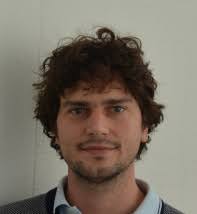
The defense will be available at https://join.skype.com/dbnmuw06rBou
Title
Medium Access Control Layer for Dedicated IoT Networks
Abstract
Les réseaux dédiés pour l’Internet des Objets sont apparus avec la promesse de connecter des milliers de nœuds, voire plus, à une seule station de base dans une topologie en étoile. Cette nouvelle logique représente un changement fondamental dans la façon de penser les réseaux, après des décennies pendant lesquelles les travaux de recherche se sont focalisés sur les réseaux multi-sauts.
Les réseaux pour l’Internet des Objets se caractérisent par la longue portée des transmissions, la vaste couverture géographique, une faible consommation d’énergie et un bas coût de mise en place. Cela a rendu nécessaire des adaptations à tous les niveaux protocolaires afin de satisfaire les besoins de ces réseaux. Plusieurs acteurs sont en concurrence sur le marché de l’Internet des Objets, essayant chacun d’établir la solution la plus efficiente. Ces acteurs se sont concentrés sur la modification de la couche physique, soit au niveau de la partie matérielle, soit par la proposition de nouvelles techniques de modulation. Toutefois, en ce qui concerne la solution de contrôle d’accès au canal (connue sous le nom de couche MAC), toutes les solutions proposées par ces acteurs se fondent sur des approches classiques, tel que Aloha et CSMA.
L’objectif de cette thèse est de proposer une solution MAC dynamique pour les réseaux dédiés à l’Internet des Objets. La solution proposée a la capacité de s’adapter aux conditions du réseau. Cette solution est basée sur un algorithme d’apprentissage automatique, qui apprend de l’historique du réseau afin d’établir la relation entre les conditions du réseau, les paramètres de la couche MAC et les performances du réseau en termes de fiabilité et de consommation d’énergie. La solution possède également l’originalité de faire coexister des nœuds utilisant de différentes configurations MAC au sein du même réseau. Les résultats de simulations ont montré qu’une solution MAC basée sur l’apprentissage automatique pourrait tirer profit des avantages des différents protocoles MAC classiques. Les résultats montrent aussi qu’une solution MAC cognitive offre toujours le meilleur compromis entre fiabilité et consommation d’énergie, tout en prenant en compte l’équité entre les nœuds du réseau. La solution MAC cognitive testée pour des réseaux à haute densité a prouvé des bonnes propriétés de passage à l’échelle par rapport aux protocoles MACs classiques, ce qui constitue un autre atout important de notre solution.
Jury
- M. Antoine GALLAIS, Professeur Université Polytechnique Hauts de France, Rapporteur
- M. Congduc PHAM, Professeur Université de Pau et des Pays de l’Adour, Rapporteur
- Mme. Nancy EL RACHKIDY, Maître de Conférences Université Clermont Auvergne, Examinateur
- M. Mickael MAMAN, Ingénieur de Recherche CEA LETI, Examinateur
- M. Hervé RIVANO, Professeur INSA Lyon, Directeur de thèse
- M. Razvan STANICA, Maître de Conférences INSA Lyon, Co-directeur de thèse



